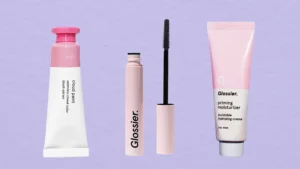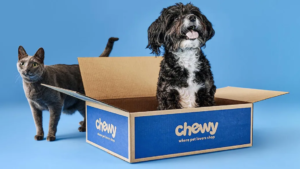In the last decade, the direct-to-consumer model has skyrocketed in popularity. Brands such as Warby Parker and Dollar Shave Club saw an opportunity to enter an existing market and make the experience better. By cutting out the middleman and offering a unique brand experience, these brands have attracted consumers who were previously dissatisfied with their shopping experiences. Andrew Lipsman, eMarketer principal analyst at Insider Intelligence, said:
“Most strong DTC brands are built on unique customer insight, so it’s not just that I can buy some goods through online channels, it’s that I understand something about the modern consumer and I’m going to build my brand around that.”
Launching a DTC brand has never been easier. A lot of companies put the DTC gloss on already existing products, many of which are not that revolutionary, to grab the attention of customers. This move by brands resulted in an extremely crowded market. The online mattress industry, for instance, has become so crowded that it is difficult for new brands to stand out from the pack and acquire market share. Leading brands, who pour more and more money into their marketing budgets, are able to attract customers by targeting specific interests and demographics with their advertising.
Lipsman said that a successful brand should be built on the consumer. Fostering a sense of community, using social channels effectively, and leaning on these avenues for customer engagement are techniques DTCs have mastered.
Despite a few darker spots, the DTC model continues to be applicable in a number of industries. More traditional retailers, like Nike and Under Armour, have recently experienced the benefits of focusing more on direct-to-consumer channels to boost profitability.
Though the DTC (direct-to-consumer) trend is slowing, it will continue to be a major force for retail because of its ability to reach consumers directly and make products more affordable. Indeed, the industry is ready to welcome a new class of DTC players, as discussed below.
-
Glossier:

Emily Weiss started Into the Gloss, a beauty website, in 2010, encouraging consumers to share the products they love by using the site as a source of inspiration and information. Following the Into the gloss beauty website, Emily Weiss founded Glossier, a new take on the cosmetics industry. She believed that public taste and preference should be front and centre of all product design.
Glossier, a $1.2 billion beauty brand according to data provided by PitchBook, has grown its following and formed somewhat of a cult-like following. The brand now boasts 2.7 million Instagram followers and around 55,000 TikTok followers.
-
Away:

Away, a luggage brand entered the market in 2016 and was determined to make travel more seamless through its luxurious products. The brand started with a suitcase and now includes other premium travel goods, like bags, packing cubes, and tablet cases in its portfolio.
Due to the coronavirus pandemic in 2020, most travel activities were halted. In response, the brand launched its first-ever sitewide sale in September of the sameyear, going against the DTC mantra of never discounting. But the brand raised $35 million more in funding the next June, according to PitchBook, pushing its funding to $216 million. It is now valued at $1.45 billion.
-
Allbird:

Allbirds, a footwear company co-founded by Joey Zwillinger and Tim Brown, launched with no prior experience in the footwear industry. The brand reimagined the entire footwear process, from choosing product materials to rethinking packaging, that was environmentally friendly and sustainable.
Retailers can be more environmentally conscious in their business practices, especially if they want to appeal to consumers in younger age groups. The research report from Hana Ben-Shabat, founder of Gen Z research firm Gen Z Planet, unfolded that 60% of Gen Zers are more likely to shop from brands that adopt sustainable practices.
Allbirds took this approach one step further by announcing that it will raise prices on Black Friday when most of its competitors offered discounts. The DTC brand increased prices by $1 and donated the extra dollar plus an additional dollar matched by the company to Greta Thunberg’s youth-led climate movement Fridays for Future.
Allbirds debuted its first apparel collection including a T-shirt, wool cardigan, and wool jumper as well as a puffer jacket in 2020. The DTC brand launched its comfortable clothing line at the perfect time as consumers were preferring comfort over style during the pandemic.
-
Brooklinen:

In 2014, Rich and Vicki Fulop founded Brooklinen. The goal was to create comfortable sheets at an affordable price. The brand’s product portfolio expanded and now includes bath towels, loungewear, and other items.
The company rolled out its collection “Spaces by Brooklinen,” and it launched a marketplace that offers customers curated selections from independent designers and artisans. This move set Brooklinen apart from other DTC competitors. At the time it launched, it already offered big names in the direct-to-consumer space, like furniture brand Floyd and plant brand The Sill.
-
Chewy:

Chewy launched its online pet supply site at a time when other brands were not participating in e-commerce. As a result, it offered an attractive option for consumers who did not want to haul heavy bags of pet food around a store and could simply have it delivered to their doorstep. As a result, Chewy’s active customer count increased by 4.6 million (37.9 percent).




